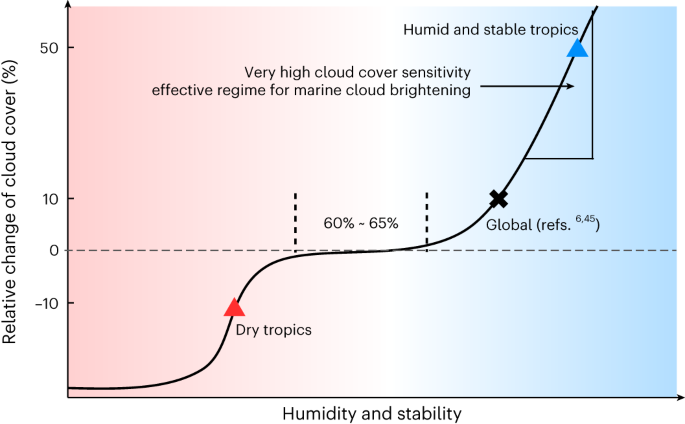Phys.org April 11, 2024
Marine cloud brightening is a proposed method to tackle warming through injecting aerosols into marine clouds. However, it is unclear how aerosols influence clouds. An international team of researchers (USA – University of Birmingham, NASA GSFC, Greenbelt, MD, University of Maryland Baltimore County, UK, Switzerland) used satellite observations of volcanic eruptions in Hawaii to quantify the aerosol fingerprint on tropical marine clouds. They observed a large enhancement in reflected sunlight, mainly due to an aerosol-induced increase in cloud cover. This suggested that the current level of global warming is driven by a weaker net radiative forcing than previously thought, arising from the competing effects of greenhouse gases and aerosols. According to the researchers this implied a greater sensitivity of Earth’s climate to radiative forcing and therefore a larger warming response to both rising greenhouse gas concentrations and reductions in atmospheric aerosols due to air quality measures. Their findings also indicated that mitigation of global warming via marine cloud brightening is plausible and most effective in humid and stable conditions in the tropics where solar radiation is strong… read more. Open Access TECHNICAL ARTICLE

Conceptual model of cloud cover’s response to aerosol perturbation. Credit: Nature Geoscience, 11 April 2024